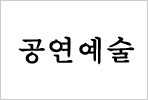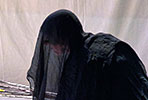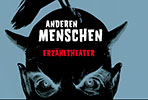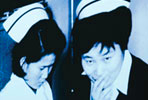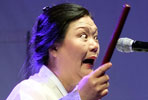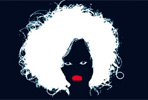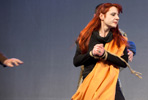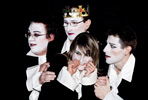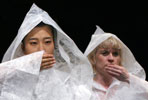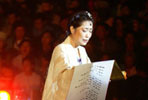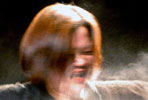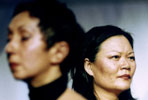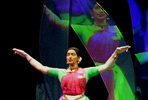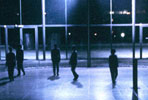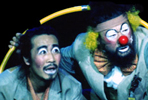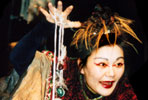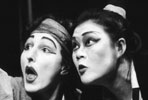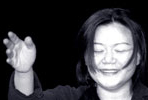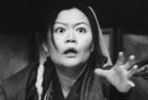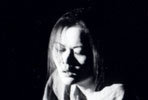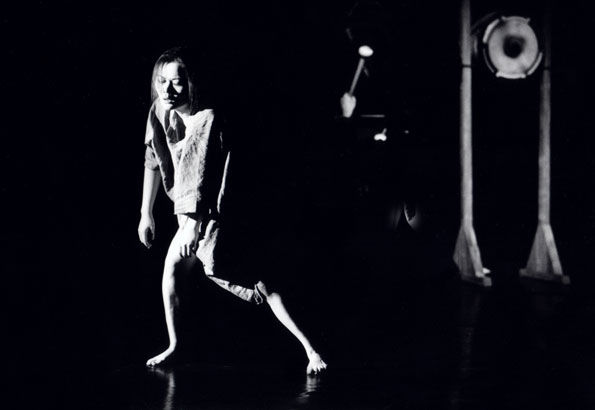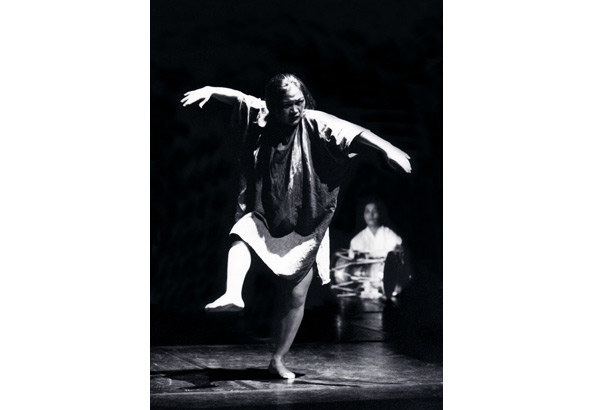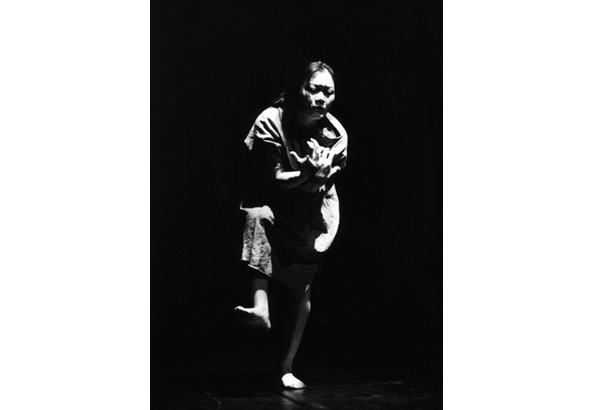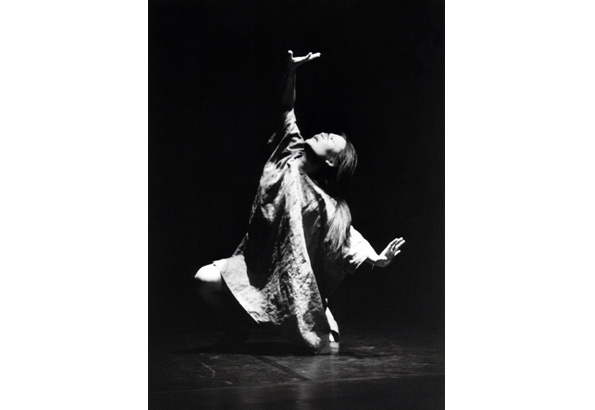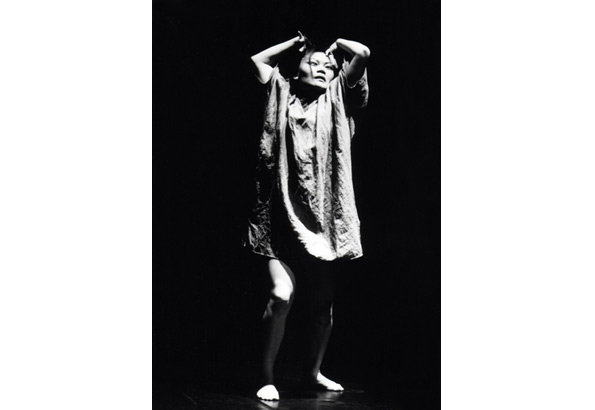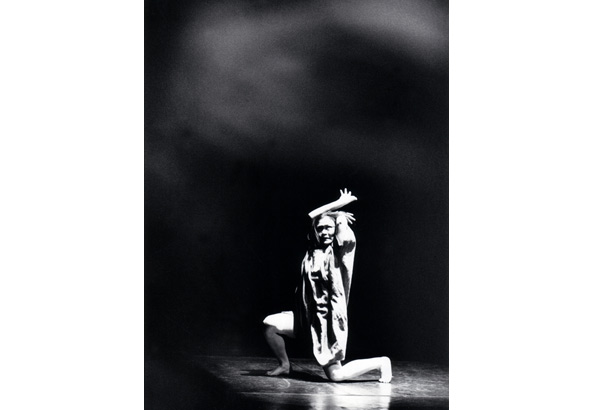
- Share:
- Google Plus
PIRI - Cry of the Soul
PIRI - the cry of the Soul
a dance solo
music by I-Sang Yun: "Piri" for oboe solo
1st. Premiere 1989 1st. Berliner Tanztage
2nd. Premiere 1994 Berlin
| Music | "Piri" (1971) von I-Sang Yun |
| Choreography | Soogi Kang, Dietmar Lenz |
| Light Design | Dietmar Lenz |
| Dance | Soogi Kang |
| Koean Drums, Gongs | Johannes Oehlmann |
| Jang-Go Drum | Jung-Sook Rippel |
| Gongs | Dietmar Lenz |
| Fotos | Klaus Rabien |
I-Sang Yun composed "Piri" (1971) after his imprisonment in South Korea. 1967 abducted by the South Korean Central Intelligence Agency (KCIA) from Germany to South-Korea, I-Sang Yun was a political prisoner of the South Korean dictatorship under President Park up to 1969.
Choreographic approach
"In european music only the tone sequence gains life, the single tone may be relatively abstract. In contrast in Asia already the tone of its own lives. You can compare our tone with brush strokes, in contrast to the line of a drawing pencil. From the onset of a tone to the fading away each note is subject to changes ... "
I-Sang Yun
Can this what I-Sang Yun said about the tone and his creation be translated into dance movement, gesture, choreography?
"Here the oboe is the voice of the prisoner in the dungeon. It expresses suffering, but also the attempt to exceed the outer freedom and to reach spiritual freedom. "
Luise Rinser
A bird flutters down,
a little bird,
on to the mallow-blossom in the pale morning
on to the plate,
the jagged blade,
the little bird.
Where did he come from?
They arrested him.
...
Why a tear turns into a drop of blood?
The mallow-blossom,
a bird made of paper fluttered down,
dead, who no longer flies.
And yet,
silent fluttering of the dead.
Whether that bird will be able to fly?
A little bird flutters down.
On to the blade,
like a blade flapping,
a little bird with red eyes. ...
Kim Chi-Ha: „Der Regen“
Press vote
Old and young blood: Soogi Kang in the Theatermanufaktur
"The Korean Soogi Kang touched with a strange intensity. I'm not saying I would have understood her piece, especially since I have no idea of "shamanic archetypes of drama from Korea," which inspired her dance. But only the face of the Korean seemed to me here, in the culture of larval smooth, like a wild call from original times. Soogi Kang moved only in a small square of light, and this became a place of concentration and elemental experiences where there was nothing more secondary importance. Their presence on the stage was not the "here and now" of modern dance, but she seemed simultaneously present in the light of square and in another dimension. Her gestures sometimes slowed down to barely perceptible, but never froze to poses, ranged over into another room. She looked like a transparent skin around a beating heart, a plant that gradually extends into the light; a prisoned demon that pulls with violent jumps at his chains. Her vitality was all organic - a plant or a magnificent butterfly - in total transcendence".
KBM, TAZ-Tageszeitung, 10.02.1989
